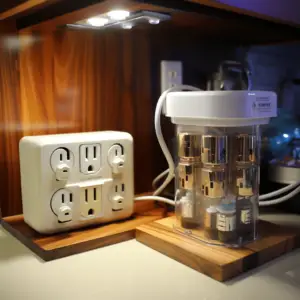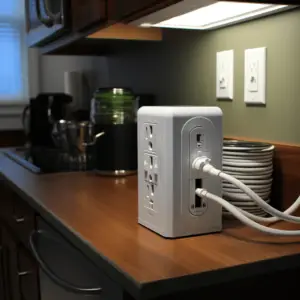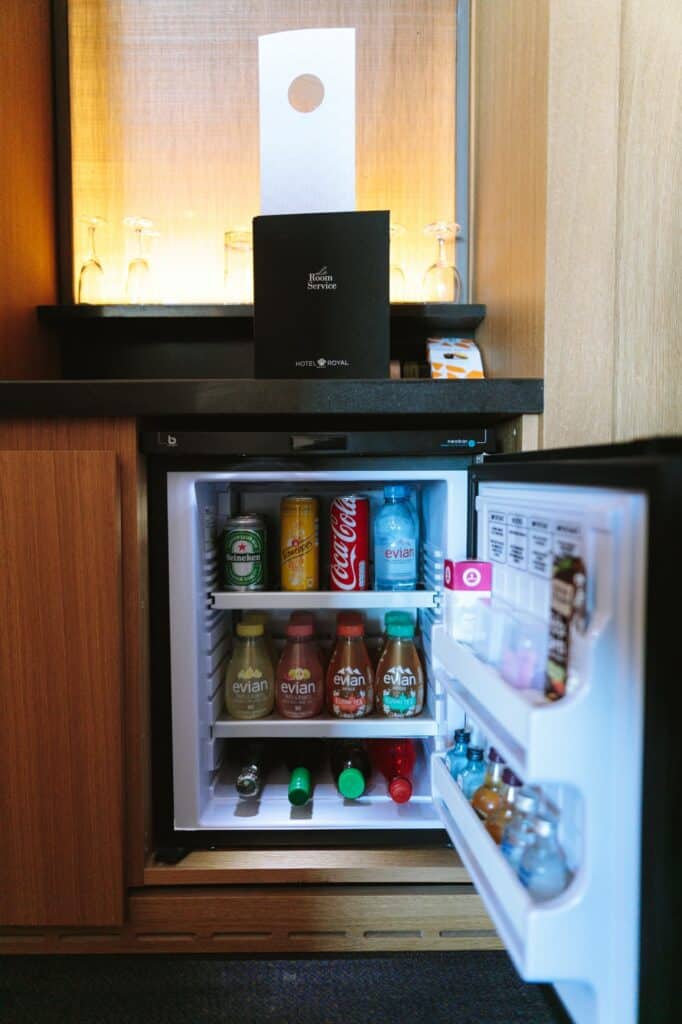These days, mini-fridges are becoming increasingly fashionable. This is especially true for those who live in smaller flats and those who enjoy traveling. Mini-refrigerators are convenient in places where larger ones cannot be used. Mini-fridges help cars, hotels, residences, offices, and dorms.
However, can a surge protector power a mini-fridge? In this brief article, we’ll discuss mini fridge surge protector concerns. The guide will also explain why a mini fridge should be hooked into a surge protector and how they work.
Table of Contents
Can You Plug a Mini Fridge into a Surge Protector?

Yes, you can use a surge protector with your mini-fridge. Surge protectors have been approved for use with mini-fridges and can safeguard your gadget from surges or spikes. However, connecting your mini fridge to a power surge protector should not be considered a good idea. This is true for large refrigerators as well.
What is the Problem with the Use of Surge Protectors?
There are many reasons not to use a surge protector with your mini-fridge. First, if your refrigerator’s compressor experiences temperature or current overloads, it will shut down instantly.
A surge protector may also have the potential to override the systems built into a fridge. This means that if there is a power surge, your fridge may not be able to restart, and you may end up with an unintended problem with the food stored inside.
Why Should You Use a Surge Protector?
Surge protectors mostly protect gadgets from power surges. Power fluctuations cause surges, which surge protectors on electronics automatically detect and handle.
A power surge might occur when electronic equipment with high power, such as refrigerators and ovens, are all plugged into the same outlet. This may cause spikes in current to allow these gadgets to operate. Surges can also occur in the home due to faulty electrical connections.
A power surge can raise the voltage of an electricity flow above the designated level, which is 120 volts. When the power fluctuates, especially when it rises over these thresholds, a power surge might occur, causing damage to your appliances.
What is a Surge Protector?
A surge protector is an electrical appliance that protects electrical devices and equipment against power surges or voltage spikes. It can also block any voltage greater than 120 volts, which is the safe, designated level. The high voltages can shorten the device’s lifespan, burn the wires, wipe out previously stored data, or permanently harm the appliances.
A surge protector is a long, thin piece of plastic with multiple receptacles into which you can plug your equipment. It also comes with a cord that plugs it into a wall socket. A surge protector with a unit of up to 1000 joules is suitable for a mini-fridge.
How Does a Surge Protector Function?
A steady electricity voltage is required by the gadgets you plug into your electrical sockets. Unfortunately, your sockets are unable to provide consistent power. Surge protectors protect your electronic equipment from voltage fluctuations by rerouting dangerous power so that only the appropriate amount of electricity passes through them.
Most US homes and businesses use 120 volts. The surge protector directs excess energy to the grounding wire to protect plugged-in devices when voltage exceeds 120 volts.
Is a Surge Protector Similar to a Power Strip?
Even though a power surge protector resembles a power strip, a surge protector is safer and more helpful. A power strip merely provides additional outlet space. On the other hand, a surge protector is a device that protects against voltage surges. Look for the joules rating on the packaging to ensure you’re buying a surge protector; a power strip won’t have this. Joules are units of energy measurement, and depending on the strength of the surge, they will inform you how long your equipment will be protected.
What are the Features of a Power Surge Protector?

The following are some of the characteristics of a power surge protector.
- A surge protector is usually a Zener diode that prevents spikes. It’s also buried with a transient voltage suppression diode.
- Surge protectors cannot survive sudden surges because their iron cores only transfer alternating current.
- Like a filter or bypass, a surge protector removes spikes and surges to smooth equipment power flow.
- Surge protectors safeguard equipment from faulty circuit breakers.
- Metal oxide varistor (MOV) in the surge can limit excessive voltage. In certain surge protectors’ warranty packages, the manufacturer will repair both the surge protector and the devices connected to it if an appliance is damaged.
- Most appliances now include these safety measures to prevent spikes and surges.
Conclusion
We’ve answered the question “can you connect a mini fridge into a surge protector?” with an in-depth review of the reasons and needs for plugging a mini fridge into a surge protector in this quick guide. Furthermore, we’ve talked about the issues that can develop while plugging a mini fridge into a surge protector, what a surge protector is, how it works, and the most significant characteristics of a surge protector.


